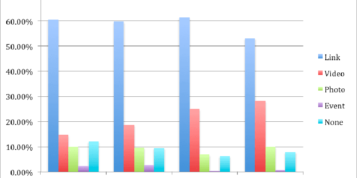For as long as there has been marketing there has been spam. From the earliest examples of direct mail, right up to modern times, there has been unsolicited correspondence between brands and the people they want to reach.
Even though in 2015, security firm Symantec reported that spam emails dropped to below 50 per cent of all emails for the first time in more than a decade, with so many devices and ways to communicate with in 2016, it feels like the spam problem is getting worse, not better. In addition to paper and electronic junk mail, one can add text and social media into the mix. Not only is spam hugely annoying but it can be damaging too, with many spam messages containing phishing scams, or worse.
The rise of chatbots
It looks like there could soon be another source of spam to sully the name of legitimate digital marketers. Mark Zuckerberg announced in April that Facebook was launching a drive to create chatbots and AIs ultimately capable of perceiving reality better than us.
He forecast that chatbots will replace customer service assistants within the next decade. This may sound ambitious, but both Facebook and Microsoft will be pouring hundreds of millions of dollars into research, so it is a prospect that should not be casually dismissed.
There are a number of potential service applications that chatbots could manage, including those commonly referred to as call diversion or deflection solutions in the contact centre business: searching through frequently asked questions, ordering manuals and accessories, checking store locations and opening hours, and balance and transaction checking.
Natural language issues
There is undoubtedly enormous potential for chatbots to deliver an excellent customer experience, but it is also a great marketing opportunity too, with marketers keen to capitalise on the time spent in Facebook Messenger and other apps. Many mobile users now spend most of their time in just a few apps, which means marketers need to find a way to reach them in those apps.
Chatbots, which are based upon mini interfaces inside a messaging app, are a focus because they are easy to develop and can be deployed across multiple platforms. But there are a number of problems that need to be addressed first.
Firstly, there is a problem with natural language. Many of us already get frustrated by everything from satnavs not recognising where we want to go, to autocorrects that because of a one letter mis-spelling, change one word to another. Natural language recognition has come on a long way though, so it should be easy enough to have a conversation with a chatbot.
Some functions – checking store locations and opening hours, and balance and transaction checking – are all routinely available on websites and should be easily portable to a newer technology, delivering an equal or better customer experience.
It starts to get more problematic where there is a lot of duplication and variety of spelling, such as in names of places, hotels, restaurants and even flowers. Most of us struggle with the spellings and pronunciations of foreign words and place names, so disambiguation will be very difficult. How many times will we put up with “Did you say..?” and “Did you mean..?” before we give up in disgust, leaving some poor contact centre agent to try to calm down a frustrated customer?
More spam
There is also the most significant issue (for digital marketers anyway), that of losing their message in a sea of spam. Most reports about chatbots have focused on discussions initiated by the consumer. But we need now to start thinking about a time when the robots start the conversation. We have got used to our inboxes and voicemails being flooded with spam, but will we put up with another source of this nuisance?
Legislators have taken decades to pass only marginally enforceable laws to protect us from unwanted inbound calls, and even then only within their own limited sphere of control. So the pending arrival of chatbots surely heralds another wave of annoying unsolicited ‘conversations’. Just imagine a scenario where a chatbot will not give up trying to interest you in making a PPI claim or trying to persuade you to pursue a whiplash claim, through Facebook Messenger or Whatsapp.
One thing we can be sure of in this world is that unscrupulous people will always find a way to exploit technology to attempt to scam us, which damages perceptions of legitimate, permission-based digital marketers.
Might it be possible to require and enforce the registration of every instance of a chatbot or AI, anywhere in the world, so that their activities can be clearly tracked? Would this help to limit the impact of clandestine chatbot operators claiming to be what they are not?
We need Facebook, Microsoft and others to participate in the formulation of solid and viable legislation, otherwise the potential of chatbots will be lost in a tsunami of spam.






